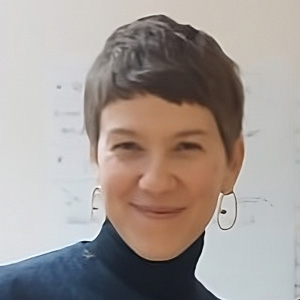Can a digital technology support the formation of a professional network?
- Published on
Everything starts with an idea
Networks of organizations that work together to achieve not only their own but also collective goals bring a lot of benefits to its members. You have the chance to exchange with peers, develop work-related ideas and co-create solutions for problems that go beyond your direct work environment. Networks of organizations are also complex. They are interlinked on various levels and the participating institutions and the people behind are diverse, independent and follow their own logic.
The challenge becomes especially visible when it comes to the use of digital technologies supporting distributed coordination, learning and memorization across network members. Technology has strong implications for social systems. Tools shape users’ way of working. Hence, the introduction of new tools to support the daily practice of a community always requires an in-depth understanding of the practices the technology is expected to aid.
The International Technical Higher Education Network (ITHEN)
We are proud to be part of the newly established ITHEN network during its formation phase. Better to say we are proud of being part of a project, in which a group of people representing different institutions are shaping a network: on the institutional level it’s a network of universities, institutions providing vocational education, NGOs and SMEs; on the individual level it’s a network of teachers, administrative representatives, and various external partners (like us) who are interested in bringing closer together the world of professional education and the “real” economical world where students land after finishing the educational phase of their life.
ITHEN is an Erasmus+ Strategic Partnership project that involves international tertiary educational institutions and universities collaborating for the development of joint international courses in the business management and marketing fields. We at OneOffTech (OOT) are supporting the network in testing open source digital technologies for cooperation and are contributing to the development of a course on Knowledge Management, which was recently included in the key competencies1 for the international marketing and business management course.
As a company working on the edge of technological solutions and organizational support, our primary role in the project is to assess the needs of the network participants and introduce open source communication and collaboration technologies for testing, that could support the network activities, create a shared memory and contribute strengthening the network identity. Our second, less official but (for us) at least as important role is - as a network partner - to contribute to the formation and consolidation of the network. We truly believe in the added value of ITHEN in the future, that we want to be part of.
The KM-Framework guides our contribution
For organizing and deciding the best possible support to a young network, some initial assumptions and a theoretical framework guide our contribution. We believe that the KM-Framework, that we use in our work, can be applied also to educational networks, although initially it was developed for international development cooperation. We need to consider:
- Networks are comprised of autonomous organizations (or even individuals) and, thus, are not legal entities.
- Especially in the formation phase a strong commitment and involvement of a group of individuals is necessary.
- Some form of governance is necessary to ensure that participants engage in collective, transparent and mutually supportive action, that conflicts are addressed, and that network resources are acquired and utilized effectively.
- The governance needs to be developed and shaped in a participatory way.
Some other principles of the KM-Framework are guiding us in our work also within this project. Concretely speaking we try to focus on:
- People: Knowledge management is so system-specific that any effort to support it must be shaped by the experiences, priorities and aspirations of practitioners. As such, they should be empowered and involved. Clear responsibilities and shared ownership are pre-conditions for successful knowledge management in practice.
- Processes: Understanding and addressing processes that determine data and knowledge flows across given communities is important.
- Technology: Technology has strong implications for social systems. The introduction of new tools to support the daily practice of a community always requires an in-depth understanding of the practices the technology is expected to aid, proactive user involvement in the analysis and design of the solution to be adopted, adequate time to pilot the solution, the collection of user feedback and a clear plan for the execution of change management strategies.
- Governance: Any kind of coordination mechanisms, that fit to the network and support actors in the definition of objectives, adoption and adaptation of policies, as well as monitoring of processes and results, is required and to be developed together.
User-centered needs assessment and an agile approach: let people tell their story and jointly design the future
Let’s reflect on our contribution to the ITHEN network so far. In ITHEN we met very diverse groups of participants that are still in the process of developing a common vision.

While trying to stay agile, and adapting along the process we decided to follow a three-step approach:
- We started with semi-structured interviews of relevant key persons from each organization. Based on the interviews we identified four main directions of information and knowledge flows (already implemented or envisioned for the future).

- In step 2 we used the interviews to draft user stories that describe the main current practices within the information and knowledge flow, also challenges and the benefits - when they are solved - in a language that is close to the partners’ working reality, using a fictional character. These user stories were shared with all ITHEN partners, who had the chance to discuss and comment. We wanted to make sure that the user stories were fitting to everyone’s setting. This was the basis for us to go into the solution and start selecting a technology that fits to the needs of the different user groups.
- Accordingly, we selected an open source technology that was fitting to the user stories and could fit the needs of the current and future network members. We wanted to start as soon as possible with the testing period to
- give a chance to the network members to try the technology out, check its usability and general adequacy to the use cases, collect feedback and have space for adaptation
- co-develop with all members/users an idea of concrete potential benefit that such a technology could bring to the network.
Currently, we are in the process of testing it and elaborating ways of supporting a smooth integration of the technology in the daily practice. Hereby, not only are we providing a digital tool but – at least as important – aim at supporting establishment of processes,definition of roles and building up a governance structure for a joint use of the technology within the future network.
Conclusions, learnings and perspectives
Although we are still in the middle of the process, the first feedback shows that we are on a good way. Network partners have started to use the digital tool and a feedback survey showed, that most of them can see the benefit of such a technology for the network. We supported the members to develop a general understanding of the tool and its functions and have first experiences in trying it out.
We began this project as a promoter of self-hosted open source technologies to support information management in a network of academies and universities.
We conducted a needs assessment focusing not only on the technology, but especially on the organizational aspects — people, processes and governance mechanisms — which the technology is part of. The storytelling approach followed stimulated participation, facilitated understanding of the knowledge management goals of the network, and gave a rationale and motivation for partners to proactively test the technology.
Our challenge now is to continue supporting the process, triggering discussion and creating spaces in which the tool can be used for concrete project activities, fostering a discussion on the network itself.
We are now in the pilot phase of applying the elaborated teaching methodologies, and we are pleased to take part in the first international course that will have knowledge management as a strategic teaching topic!
The human-centered approach and the KM-Framework as a theoretical basis for selecting our actions are very helpful and will continue to guide our next steps. We don’t know yet, whether we will be successful. but we know it’s a great experience that gives us the option to be a partner in a professional network and the opportunity of professional growth.
And yes, we believe that a digital technology can support formation of a network if the focus remains on people.

